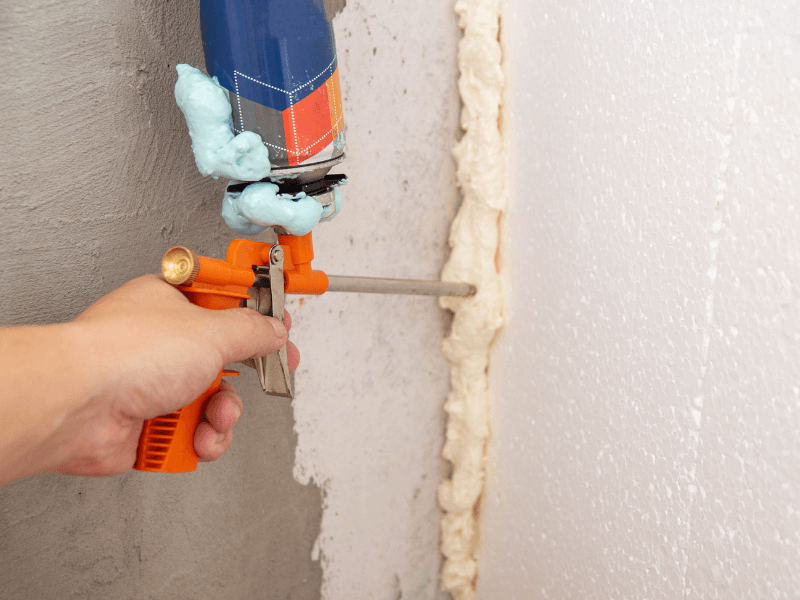Construction law is complex – there’s no way around that. Navigating through it can be a daunting task for anyone in a construction project. A construction lawsuit might present numerous challenges. It’ll take careful navigation and legal expertise. That’s why having an expert construction attorney in your back pocket is necessary for several liability factors.
In this guide, we’ll explore what to expect from a construction litigation claim. We’ll shed light on the true role of a construction litigation attorney. Learn the typical timeline of the litigation process, how long it should take to reach a settlement, and more. Keep reading to discover key considerations for hiring relevant legal representation. Let’s get started.
Breaking Down the Terms: What is a Construction Litigation Claim?
In the world of construction, disputes are almost inevitable. When these disagreements escalate, legal action might be necessary. The disputes can naturally evolve intro construction litigation claims or even a construction lawsuit. These claims encompass a wide range of legal issues from construction projects, including:
- Contract disputes;
- Construction defects;
- Payment disputes; and
- Mechanic’s liens

A construction litigation claim is a formal legal action one party initiates against another. The aim is to resolve a dispute related to a construction project. The claim is a pivotal moment in the construction process that typically requires the intervention of legal professionals such as a construction attorney.
What Does a Construction Attorney Do?
A construction attorney can navigate the complexities of construction law. They’ll work to help you achieve a favorable outcome using their specialized legal expertise.
The multifaceted role of a construction lawyer includes legal advocacy and dispute resolution. They can review contracts and aid in risk management. Most importantly, they provide specialized expertise in the complex realm of construction law. Their knowledge, experience, and dedication are what make them invaluable assetes.
3 Common Types of Construction Lawsuits
Construction projects are prone to various legal dispute, often resulting in litigation. Below are the three most common types of construction lawsuits.



Professional Negligence
Sometimes, a professional fails to meet the standard of care expected of them. A construction project may include architects, engineers, and other construction professionals. When a professional fails to meet expectations, someone may experience physical harm or even financial loss. Professional negligence may include, but is not limited to:
- Errors or omissions in design plans
- Failure to secure necessary permits
- Inadequate supervision of construction activities
- Using a defective project or materials
- Failure to comply with building codes, regulations, or other requirements
In short, a professional negligence claim aims to hold the responsible parties accountable.
Payment Disputes
Another common construction lawsuit involves disagreements over payment. These disputes might be about the amount, the timing of the payments, or a combination of the two. They may involve non-payment, underpayment, or disputes over change orders and extra work performed.
Claims in this category aim to resolve conflict over payment obligations. Ultimately, it’s so all parties receive fair compensation for the work they performed and/or the materials supplied.
Delay Claims
Sometimes, construction projects experience delays beyond the agreed-upon completion date. Plenty of facts can cause a construction delay, such as:
- Adverse weather conditions
- Unforeseen site conditions
- Contractor defaults
- Changes in project scope
Unfortunately, delays can result in financial losses and schedule disruptions. Lawsuits might seek compensation for additional costs incurred as a direct result of the delay. These extra costs might include extended overhead, increased labor or materials, and lost profits. It takes a complex assessment of causation and responsibility to effectively represent these types of cases.
An Example Timeline of the Construction Lawsuit Process

Construction litigation claims can be complex behemoths. It takes a qualified professional to traverse through the series of necessary legal procedural steps. Below is an example timeline illustrating the various stages of the litigation process.
1. Pre-Filing Considerations
Before initiating legal action, parties may engage in pre-filing considerations. Sometimes, parties may find a resolution here. They can solve the dispute through negotiation, mediation, or other alternatives. This is also the stage where parties assess the strength of their case. It’s the stage in which you’ll gather evidence and consult with legal counsel to determine an appropriate course of action.
2. Dispute Resolution
When pre-filing negotiations don’t yield results, parties proceed to the dispute resolution stage. This stage may involve exchanging demand letters. It may require engaging in formal mediation or arbitration proceedings. The dispute resolution stage aims to reach a mutually acceptable agreement right here. Otherwise, there’s a need for litigation, which uses time and resources for all parties.
3. Filing and the Response
If dispute resolution efforts are unsuccessful, the next stage is to initiate the litigation process. That’s typically the aggrieved party’s role. They’ll file a formal complaint in court. The defendant is then served with the complaint. They have a specified period to respond. Typically, the response is to file an answer that admits or denies the allegations. It will assert any affirmative defenses, if there are any.
4. Discovery Phase
Once the complaint and response are filed, the litigation enters the discovery phase. During this stage, both parties exchange relevant information and evidence. These might be through interrogatories, requests for the production of documents, and depositions. The discovery phase allows parties to gather more facts. both sides can assess the strengths and weaknesses of their case and prepare for trial.
5. Pre-Trial Motions
In some cases, parties may file pre-trial motions. Common pre-trial motions include motions to dismiss, for summary judgement, or to compel discovery. These motions aim to resolve legal issues. At the very least, they help narrow the scope of the case before trial.
6. Potential Settlement Negotiations
At any point in the litigation process, parties can engage in settlement negotiations. The possibility of resolving the dispute without a need for a trial is still present. These negotiations can occur at any stage of the litigation procedure. The parties’ attorneys will facilitate and may continue to negotiate and exchange settlement offers. If they don’t reach a mutually acceptable agreement, though, the case proceeds to trial.
7. Trial Proceedings and the Judgement

During trial, both parties present their arguments, including evidence and witnesses, before a judge or jury. After trial proceedings, the judge or jury deliberates. They render a judgement based on the evidence presented during each phase of the trial proceedings.
8. Appeals Process (if Applicable)
When a judge or jury renders a judgement, either party may choose to appeal the decision. An appellate court will decide whether to uphold, reverse, or remand the lower court’s decision.
With this example timeline, you can see a general overview of the typical stages of a construction lawsuit. The duration of each stage varies based on the case’s complexity, the court’s schedule, and more. The parties’ willingness to negotiate or engage in dispute resolution also plays a major factor.
How Long Should a Construction Lawsuit Take to Reach a Resolution?
How long a construction lawsuit takes depends on the stage at which the case gets resolved. That’s before you account for relevant state and local laws. Here’s a rough estimate of how long resolutions take at each stage:
- A case resolved at the mediation stage typically takes less than six months
- If the case goes to trial, it make take 12 to 24 months
- Large-scale cases that involve complexities, like several witnesses and expert testimony may take between 18 and 24 months
- If a case is at an even larger scale, it may take longer than 24 months
It can be frustrating to see that it can one to two years or longer for a resolution. Sometimes, that frustration leaves parties not even wanting to start the litigation process.
The good news is that there are often ways to avoid these lengthy processes, including working with a competent construction attorney. If issues arise at work or businesses, it’s time to involve a qualified legal professional.
The Importance of Construction Law in Certain States
Each state has unique legal considerations and regulations governing construction projects. Pursiano Law actively files suits against major housing developers across some of these states. As a result, our team is intimately familiar with the unique legal nuances a homeowner or housing authority might face.
Florida
Florida boasts a booming construction industry. Several residential and commercial developments are underway across the state. These construction projects are subject to a complex framework of laws and regulations. These include building codes, licensing requirements, and lien laws.
Pursiano Law has extensive experience navigating Florida’s construction laws. We’ve represented clients in a range of relevant construction disputes.

Nevada
Nevada’s construction industry plays a vital role in the state’s economy. Significant infrastructure projects and real estate developments drive growth and innovation. And, in an effort to crack down on “shady” contractors, Nevada pushed through Assembly Bill 39. The bill limits the amount of money a contractor can accept upfront.
It’s state-specific addendums like these that make a construction attorney so invaluable. Pursiano law stands versed in Nevada’s construction legal landscape. We represent clients involving delay claims, payment disputes, construction defects and more.
South Carolina
South Carolina is also on the client’s side when it comes to construction law. Subcontractors, the general contractor, and the developer are all responsible for the quality of a building. They’re potentially liable for defects in a commercial building or home.
Fortunately, Pursiano Law holds a strong presence in South Carolina’s construction litigation arena. We advocate for clients through all types of construction lawsuits and claims.
3 Key Considerations for Choosing a Construction Attorney
You need a construction attorney who represents your interests. They need to be determined to help you achieve a favorable outcome. Consider these key factors to ensure you choose the right advocate for your needs. Below are crucial considerations to keep in mind.
Reputation & Track Record
Evaluate the attorney’s reputation in the legal community. Look at their track record of success in handling construction litigation cases. You can see this in testimonials, peer reviews, and case outcomes. Each of these helps to showcase a construction attorney’s competence and reliability.
Communication & Accessibility
Not everyone can communicate effectively, but you certainly need an attorney who does. Another consideration is whether they can maintain and open line of communication with you. That’ll help influence several key factors throughout the legal process. In truth, accessibility is vital. Ensure the attorney and their team are responsive to questions and concerns.
Strategic Approach
Assess your potential attorney’s strategic approach to litigation. A skilled construction lawyer will have a clear plan to approach your case. That includes strategies for negotiation, mediation, and/or trial.

